Despite the inherent advantages of pallet assembly conveyors, traditional conveying methods have one large negative, particularly when it comes to fragile products: backpressure. In this blog, we’ll explore an innovative way to avoid the issue of backpressure in pallet assembly conveyor systems.
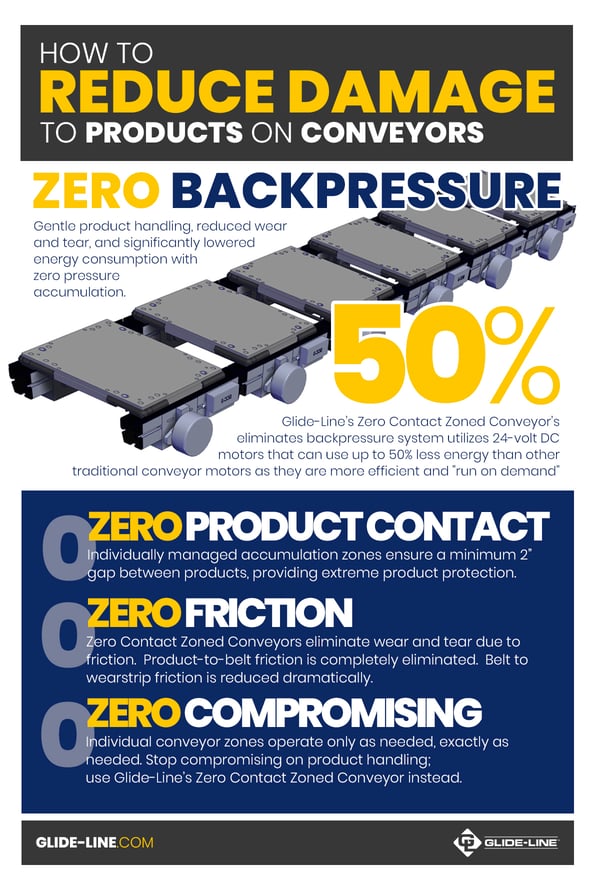
The Issue with standard assembly conveyors
Pallet conveyor automation systems typically experience backpressure during product accumulation when pallets further upstream successively bump into each other as they stack up behind the lead pallet. This backpressure can generate hundreds of pounds of force and, worse, can compromise the integrity and quality of the products being accumulated.
This graphic shows how traditional pallet conveyors and pallet stops accumulate backpressure.
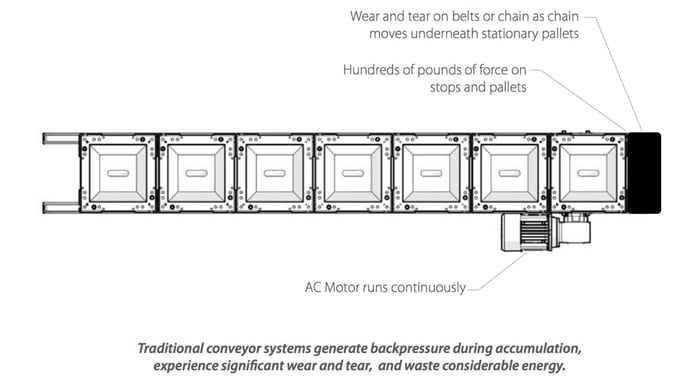
Accumulation is a necessary part of many processes. But when pallets bang into each other and cause damage to products, or friction creates unnecessary wear and tear, a better solution is needed. Until now, up-sizing the conveyor system has been the easiest and most effective way to handle the negative consequences of product accumulation. However, this solution uses larger-than-necessary parts, costs more money, and uses more energy than the right-fit conveyor system.
Zero Contact Zoned Conveyors
The better, more innovative solution to backpressure is an assembly conveyor with individually managed accumulation zones.
A traditional conveyor, consisting of a longer belt (or other conveying media), single motor, and pallets. A pallet will hit a stop and the pallets will accumulate behind one another, with one pallet bumping into the next. In contrast, with a zoned conveyor, instead of a single belt and AC motor running constantly underneath pallets (including those stopped and backed up in a process), it has small, individual, discrete 24V brushless DC motors motors distributed throughout the assembly with a series of shorter belts.
These individually controlled motors can turn on or turn off small sections of the overall conveyor system independently. The technology will sense when a pallet is stopped downstream and will proactively stop the next pallet before it hits the stopped pallet. No contact, no pressure, and one pallet per zone; this is referred to as zero contact zoned conveyors.
Here’s an illustration:
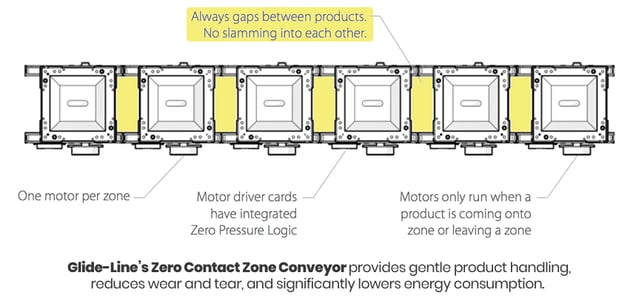
Not only does this simplify the control scheme and reduce hardware costs, it significantly reduces wear and the need for replacement parts.
How a zoned conveyor system prevents damage to products
A conveying system with individually managed accumulation zones ensures there’s always a gap between products, which provides gentle product handling by eliminating the hundreds of pounds of backpressure with potential to cause product damage.
Each individual zone can handle up to 200 lbs, so the ability to transport heavy loads is uncompromised. A Zero Contact Zoned Conveyor eliminates wear and tear due to friction by dividing the conveying system into multiple zones and operating each zone only as the process requires.
Additionally, this assembly conveyor can be applied to a process without a pallet. For example, a recent appliance manufacturer application required the conveying of highly polished stainless steel doors. We used the Zero Contact Zoned Conveyor to prevent any back to back accumulation. And since we prevent the belt from running continuously underneath the product, we avoid any scuffing which could ruin the finish of the product.
Eliminating friction and running the motors and conveyor media only when needed drastically reduces energy consumption. It also reduces wear and tear on the conveyor and eliminates damage to product. Learn more in our white paper on this, How to Manage Backpressure from Accumulation. Download it here. Or check out our guide to The Secrets To Creating A Flexible Automation Conveyor Application Solution.


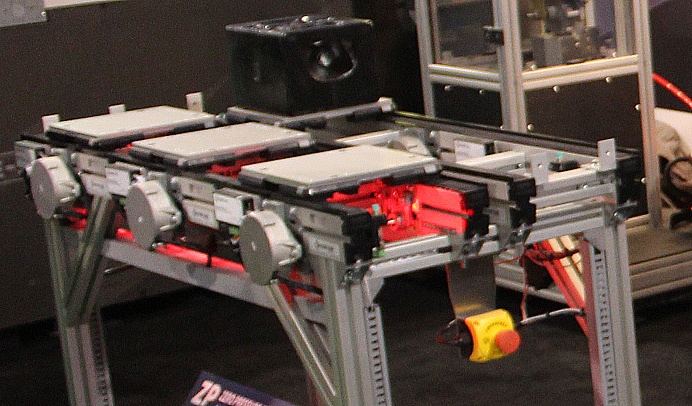



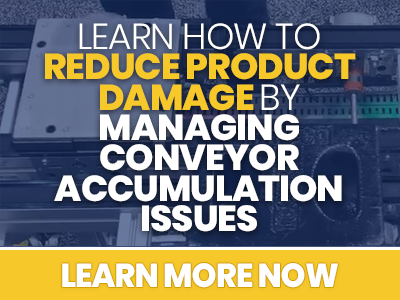


Leave a Comment